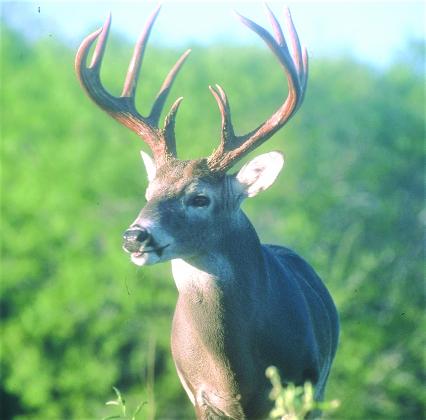November the 6 is a big, big day across Texas. It’s the opening of the general gun season and thousands of hunters will be out and about looking to put a big buck on the ground, along with some tasty and very healthy venison in the freezer.
If that’s not your idea of fun don’t forget that the run of bull reds along the Sabine jetties is going strong. Plus, trout and reds are under the birds on Sabine and Calcasieu lakes.
The South Zone duck season opens on Nov. 6, and the dove season in the Central and South zones closes on Oct. 31.
Texas Parks and Wildlife Department biologists say hunters can expect an exceptional deer season. The statewide deer population is estimated to be around 5.4 million.
Statewide, antler quality is predicted to be well above average. Native forages, vital to providing the quality nutrition needed to produce large antlers, were plentiful during the critical antler growing months of April and May. These conditions were pushed into early August from additional early summer rains and should help bucks maximize antlers as they finish out the growing season.
Often deer hunting forecasts and expectations are driven by habitat conditions the white-tailed deer herd are experiencing in the eight to 10 months prior to the season’s start. Even though dry conditions existed throughout much of the state at the end of 2020, coupled with the early 2021 winter storm, the late spring rains provided needed relief and accelerated forb (weeds and flowering plants) and grass production have helped to bolster deer body conditions ahead of the fall and winter.
Survey data from 2020 estimated the Pineywoods deer population at more than 280,000, which is higher than the previous three years. Though the area has been plagued by relatively low fawn production, in the last five years population growth has remained stable. Fawn production is expected to be above average going into this season, potentially bolstering the overall population. Buck harvest trends indicate 53.3% of the previous year’s harvest were bucks 3.5-years-old or older, a byproduct of the antler restriction regulation in this region.
This season, biologists expect the highest hunter densities will lie in the Cross Timbers, Edwards Plateau and the Pineywoods regions, with an estimated eight to nine hunters per 1,000 acres. Although more deer may be on the landscape this fall, harvesting one may be challenging with a good acorn crop expected and good native forages likely available into November. Harvest rates vary dramatically depending on where you hunt, along with the quality and quantity of native habitat available to attract and hold white-tailed deer.
The Edward’s Plateau has the highest deer population in the state with an estimate of more than 2 million deer. Hunter success in this region runs about 79% with an estimated 12.7 deer harvested per 1,000 acres. Within the Hill Country, hunters should expect to see more bucks in the mature age class (5.5 years or older) relative to other age classes due to good fawn production in 2013-2016. Hunters looking for older age class bucks should focus on the area between Hondo to Del Rio.
The South Texas Plains are known for mature bucks and above average antler quality relative to many other areas of the state. Hunter success was estimated to be 79% with an estimated harvest of 7.9 deer per 1,000 acres in 2020. Hunters are likely to see a repeat of this in the 2021-22 season.
Estimated deer densities in the Post Oak Savannah ecoregion range from 32 to 89 deer per 1,000 acres. Areas along the Interstate 10 corridor from San Antonio to Houston have population estimates of 89 deer per 1,000 acres. Deer densities gradually decrease moving north with lowest deer densities in the area north of Interstate 20 and east of Dallas. Age and antler surveys indicate 66% of the buck harvest was represented by bucks 3.5 years old or older in 2020. Hunters should expect this trend to continue in 2021.
The Cross Timbers region in north Texas has the second highest deer population in the state with more than 800,000 deer. Fawn recruitment in 2021 is expected to be around 60% based on exceptional habitat conditions and early reports of fawns being observed in July. However, above average fawn crops in 2016 and 2017 suggest the region may have more bucks in the 4.5 to 5.5-year-old age groups relative to younger age classes.
The Eastern and Western Rolling Plains regions generally have lower deer populations compared to other ecoregions. Harvest success is slightly higher in the Eastern Rolling Plains with a 69% success rate in 2020 and 65% in the Western Rolling Plains.


